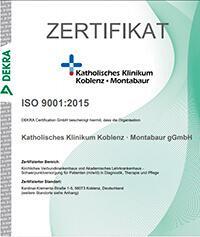Hip dysplasia is a congenital deficiency in the overlap of the femoral head by the acetabulum. Pathology leads to severe pain, lameness, and worsens the quality of life. This is one of the most common causes of hip replacement surgery at a young age – 25% of such surgical interventions are performed for dysplasia. Doctors in Europe use not only endoprosthetics, but also pelvic osteotomy to treat the disease. If performed by experienced surgeons, the procedure provides comparable results.
Content
- Types of dysplasia
- Principles of hip dysplasia treatment
- Pelvic osteotomy
- Ganz periacetabular osteotomy
- Total hip replacement
- Why is it worth undergoing treatment in Europe
- Treatment in Europe at an affordable price
Types of dysplasia
Treatment tactics depend on the type and severity of hip dysplasia. The most widespread is the Crowe's classification. It assesses the severity of hip dysplasia by the degree of proximal migration (upward shift) of the femoral head. It is expressed as a percentage relative to the height of the femoral head:
- Grade 1 – up to 50%.
- Grade 2 – up to 75%.
- Grade 3 – up to 100%.
- Grade 4 – over 100%.
According to Hartofilakidis, there are three types of hip dysplasia:
- Type A or type 1 is characterized by the enlargement of the entrance to the acetabulum, the aspiration of the femoral head into the subluxation.
- Type B or type 2 is characterized by subluxation or low hip dislocation of the hip. The true and false joints form a figure resembling an eight. The head of the femur is still in contact with the acetabulum of the pelvis.
- Type C or type 3 is characterized by complete hip dislocation. Both true and false hollows are formed separately from each other. The femoral head is in contact only with the false hollow.
Principles of hip dysplasia treatment
When timely detected, the pathology of the hip joint can be treated with conservative methods. In young children, non-surgical methods are preferred, as they are safer for health.
With congenital hip dislocation, its reduction is indicated. As a rule, it is not performed right away. The muscles should be prepared before this procedure. Doctors use massage and physical therapy. To eliminate contracture (stiffness), Freyk's pillow is used. After a few days, the dislocation is adjusted, but not abruptly. It occurs gradually, with the help of a functional splint.
Sometimes it is not possible to correct the dislocation of the hip joint with conservative methods. If there is no result after 6 months, surgery is performed.
In the first year of life, only open reduction of the hip joint or myotomy can be performed to eliminate contractures. From the second year of life, surgical interventions on bone structures can be performed. They improve the congruence of the articular surfaces and prevent the development of arthrosis.
The main options for surgical treatment of hip dysplasia are as follows:
- Pelvic osteotomy to improve the function of the limb and prevent the development of osteoarthrosis.
- Hip replacement surgery.
Osteotomy is preferred in mild dysplasia and in young patients. Older age and severe dysplasia are arguments for hip replacement.
Pelvic osteotomy
Crowe I or Hartofilakidis A hip dysplasia in young patients and children is treated with pelvic osteotomy. The surgical procedure is performed in the absence of severe degenerative changes. Doctors remove some of the bone tissue to restore normal movement biomechanics. As a result of the surgery, the contact area of the femoral head with the acetabulum increases and the risk of progression of coxarthrosis decreases.
Historically, the first option of surgical treatment for hip dysplasia was a shelf pelvic osteotomy. Doctors excised a portion of the ilium, and the resected bone fragments were used to correct the deficiency of the femoral head covering. The graft was reinforced with a fibrous capsule of the joint. Nonetheless, the correction was incomplete. In patients after surgery, the volume of hip abduction decreased. Graft resorption was frequent. Therefore, today this osteotomy option has been completely abandoned.
In the middle of the twentieth century, the Chiari osteotomy was developed, which was named after the author. However, it limits the mobility of the joint, so today it is used extremely rarely.
In the second half of the twentieth century, doctors developed other types of interventions:
- Acetabuloplasty, which was performed only for children.
- Salter osteotomy was performed for preschool children.
- Pemberton's operation was performed for children under 12 years old.
- Double pelvic osteotomy, which involved Salter osteotomy with additional resection of the pubic bone.
- Triple pelvic osteotomy (LeCoeur operation) was performed with additional osteotomy of the ischium.
- Rotational pelvic osteotomy.
- Spherical or dial osteotomy.
In countries with poorly developed medicine, these operations are still widely used in children and adults with hip dysplasia. In Europe, they are performed less and less.
Ganz periacetabular osteotomy
In Europe, children with hip dysplasia and adult patients undergo Ganz pelvic osteotomy. This surgical procedure was developed at the end of the twentieth century. It has become the most popular worldwide and is used in countries with advanced medicine.
The first operations were carried out in 1980. The first results were published by Ganz et al in 1988. These were mostly adult patients, with an average age of 29 years. The study also included children from 12 years old. Already in the twenty-first century, a group of scientists led by Steppacher analyzed the results of the Ganz operations 20 years after they were performed. Excellent results persisted:
- In 88% of patients within 10 years.
- In 77% of patients within 15 years.
- In 61% of patients within 20 years.
Other types of pelvic osteotomy cannot provide the same long-term results. Therefore, it is the Ganz operation that is considered the main method for correcting hip dysplasia.
However, the treatment outcomes do not depend only on the type of surgery. In Europe, patients receive medical care from surgeons with extensive experience and a high level of qualifications. It is on the skill of doctors that the results of surgical intervention and the risk of complications depend to the greatest extent.
Any operation can cause complications, but some of them are associated exclusively with errors in the performance of the surgical intervention. These include:
- Violation of the integrity of the pelvic ring.
- Overcorrection, which causes impingement of the hip joint – impingement syndrome, in which the range of motion decreases, pain appears and arthrosis gradually progresses.
- Damage to the lateral cutaneous nerve of the thigh, femoral, sciatic nerves.
- Unstable fixation of the osteotomy fragment.
- Separation of the articular lip.
In case of hypocorrection (insufficient correction) of hip dysplasia, the effect of the operation will be insufficient. Surgery will not completely eliminate pain and discomfort when walking.
Today, doctors in countries with advanced medicine use not the original, but a modified technique for performing Ganz pelvic osteotomy. Different hospitals use different versions of this surgical procedure. The changes made to it made surgical treatment even safer for health, effective, and less traumatic. In some centers, the Ganz operation is performed using minimally invasive surgical access. They use a modified lamellar osteotomy of the ilium, which does not require the use of fixing screws.
If the operation is performed by experienced surgeons, then in terms of safety and effectiveness it is comparable to joint replacement surgery. At the same time, the patient retains his own hip joint.
Total hip replacement
In case of highly severe hip dysplasia, joint replacement surgery is performed. The patient's own joint is removed, and an artificial endoprosthesis will be implanted instead.
Joint replacement surgery can be partial, when only the femoral part of the joint is implanted, and total, when both hip and acetabulum must be replaced. With dysplasia, only total hip replacement can be performed.
Arthroplasty for hip dysplasia is a technically complex operation. To achieve good functional outcomes without complications, both modern technology and highly qualified surgeons are required. Orthopedists in Europe are able to treat even the most severe forms of dysplasia with minimal health risks and excellent long-term results.
The greatest difficulties are observed during operations on patients with grade 3-4 hip dysplasia. This occurs due to the following:
- Femoral head is displaced upward by a few centimeters.
- Atrophy of the acetabulum of the pelvic bone occurs.
- Canal of the femur is very narrow, often deformed, so it is difficult to reliably attach the femoral part of the endoprosthesis.
- Femoral neck is rotated.
- Muscles responsible for hip abduction are poorly developed (the function of the hip joint largely depends on the condition of the muscles).
As a result, hip joint replacement in patients with dysplasia may often cause the development of complications. These can be dislocation of the endoprosthesis, muscle weakness, chronic pain, aseptic loosening of the endoprosthesis.
However, countries with advanced medicine use modern arthroplasty techniques, which make surgical interventions more effective and safer for health. If necessary, doctors can use:
- Shortening hip osteotomy.
- Greater trochanteric transfer.
- Bone grafting.
- Osteosynthesis to increase the length of the femur.
- Bone cement.
- Reinforcing rings.
- Individually tailored endoprosthesis components using 3D printing.
Another problem for patients with hip dysplasia is that they often injure not one, but two joints at once. The second hip joint may be affected. Sometimes the knee joint on the affected side is destroyed. In such cases, it is necessary to perform endoprosthetic repair of two joints. Foreign specialists successfully cope with this task. Moreover, both artificial joints can be implanted within a single surgical operation.
Why is it worth undergoing treatment in Europe
Hip dysplasia treatment in developed countries is safer for health. Doctors in these countries perform less traumatic operations with more reliable results. There is less risk of repeated surgical treatment required. The likelihood of residual hip pain or poor functional outcome is lower as well.
There are several reasons for you to undergo treatment abroad:
- Use of the most effective, safe for health options for pelvic osteotomy, including the Ganz procedure.
- Doctors prefer modified surgical techniques to reduce trauma and improve outcomes.
- Low risk of complications of pelvic osteotomy due to extensive experience and high qualifications of surgeons. In the best European hospitals, the probability of complications does not exceed 3%, while in countries with a low level of medicine, the risk of complications of pelvic osteotomy reaches 20% or more.
- Successful pelvic osteotomy even in patients over 35 years old. In Europe, this surgical intervention can be performed even for people over 50 years old.
- High efficiency of hip replacement surgery: even with dysplastic arthrosis, this operation is successful in 90% of patients.
- High-quality endoprostheses and their very precise implantation extend the life of the endoprosthesis. Artificial joints serve for decades, which is especially important for patients with hip dysplasia, because most of them are young people.
- Extensive experience in joint replacement surgery: in the developed countries of Europe, tens of thousands of such surgical procedures are performed every year.
- Good functional results of endoprosthetics even with significant limb shortening.
- Risk of aseptic loosening of the endoprosthesis is only 1-2%.
- Possibility to have replacement of two joints within a single surgical intervention.
- Even technically complex operations for repeated (revision) hip arthroplasty are successfully performed.
- High-quality care, drug prevention of complications, adequate pain relief and symptomatic therapy.
- Full-fledged rehabilitation that improves the functional outcomes of surgical interventions.
Countries with advanced medicine perform successful operations for hip dysplasia in patients of any age, including children in the first or second year of life and elderly patients.
Treatment in Europe at an affordable price
To undergo hip dysplasia treatment in one of the European hospitals, please use the services of the Booking Health company. On our website, you can find out the cost of treatment in different hospitals and compare prices in order to book a medical care program at a favorable price. The treatment of hip dysplasia in a European hospital will be easier and faster for you, and the cost of treatment will be lower.
You are welcome to leave your request on the Booking Health website. Our specialist will contact you and provide a free consultation on treatment in Europe. Booking Health will take care of the organization of your trip abroad. We will provide the following benefits for you:
- We will select a hospital for treatment in Europe, whose doctors specialize in hip dysplasia treatment and achieve the best results.
- We will solve the problem of the language barrier, we will help to establish communication with your doctor.
- We will reduce the waiting time for the medical care program. You will undergo treatment at the most suitable dates for you.
- We will reduce the price. The cost of treatment in European hospitals will be lower due to the lack of extra charges and additional coefficients for foreign patients.
- We will help you solve any organizational issues: we will draw up documents, meet you abroad and take you to the hospital, book a hotel, provide interpreting services.
- We will prepare a program and translate medical documents. You will not need to repeat the previously performed diagnostic procedures.
- We will help you keep in touch with the hospital after treatment in Europe.
- We will arrange additional diagnostic examinations and treatment in a European hospital, if required.
- We will buy medicines in another country and forward them to your native country.
The world's leading doctors will take care of your health. The specialists of the Booking Health company will help reduce the cost of treatment, organize your trip, and you can fully focus on restoring your health.
Authors:
This article was edited by medical experts, board-certified doctors Dr. Nadezhda Ivanisova, and Dr. Bohdan Mykhalniuk. For the treatment of the conditions referred to in the article, you must consult a doctor; the information in the article is not intended for self-medication!
Our editorial policy, which details our commitment to accuracy and transparency, is available here. Click this link to review our policies.














